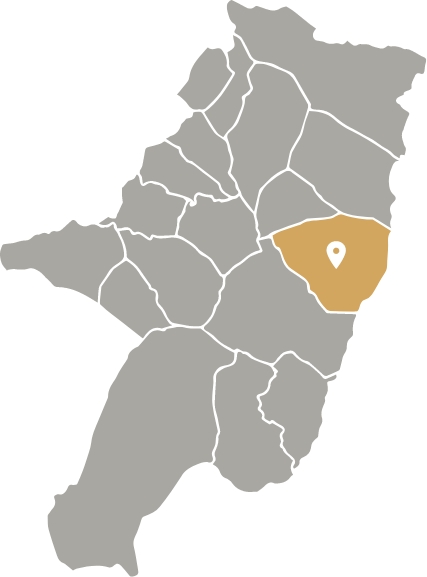Villanovafranca
Standing nearly three hundred metres above sea level, the picturesque village of Villanovafranca is framed by the fertile and verdant hills of the Marmilla region, run through by the Flumini Mannu. With a population of approximately 1,400, the village is an important farming centre, known for its wheat, olive trees, vineyards, almond trees and first-rate saffron.
An ancient Medieval village, an atmosphere frozen in time

The name of the village has ancient roots dating from 1219 and a rich history, running through many different ages and rulers, including the rule of the Zapata family, until it gained its independence in 1839.
The region has a wealth of archaeological sites, with the su Mulinu nuraghe, dating back to 1500 BC, as its most significant specimen. This site comprises multiple constructions, including corridors and fake domes, and shelters a rare Nuragic altar dating from the early Iron Age with the Moon goddess engraved on it. The archaeological finds are on display in the Civico Museo Archeologico “Su Mulinu”.
The Church of St Lawrence and the Church of St Sebastian are fascinating destinations themselves, with greatly valuable works of art. The most famous festival, dedicated to St Isidore, the patron saint of farmers, is held on the third Sunday in May and includes processions of farm machinery adorned with flowers and traditional tapestries, celebrating the local farmers’ dedication.
























